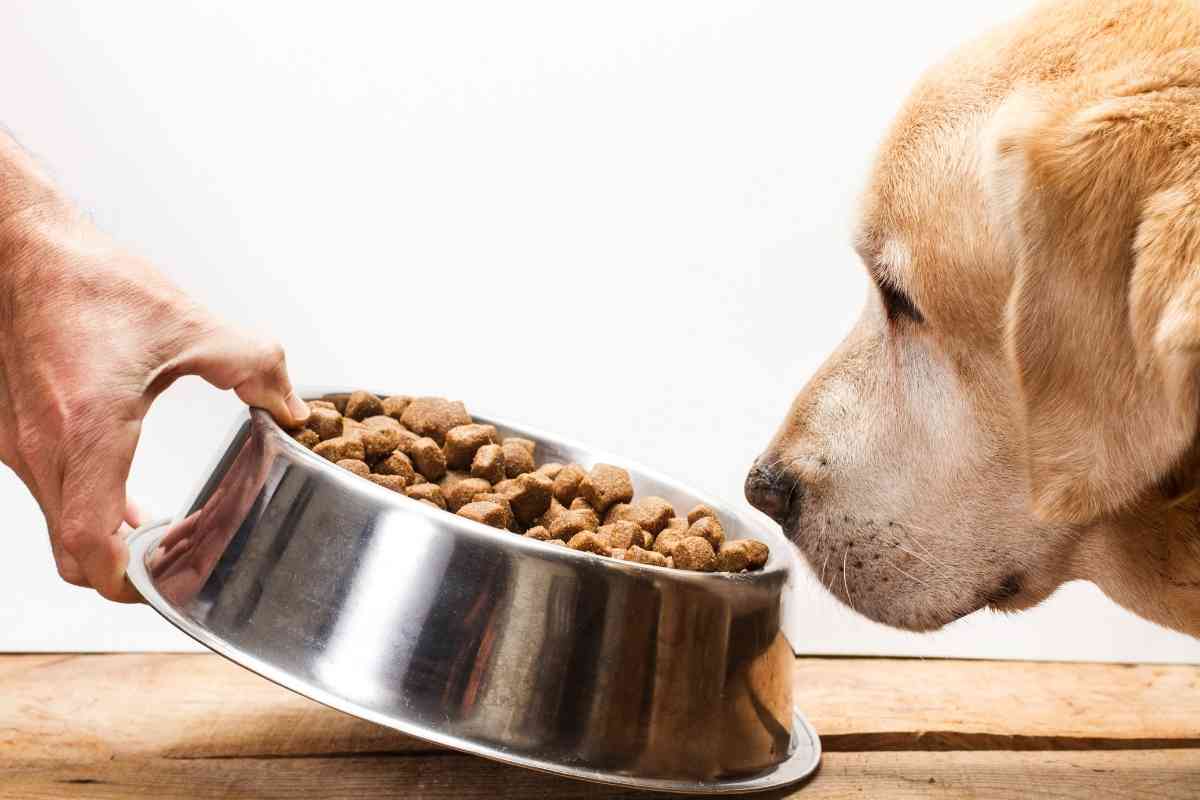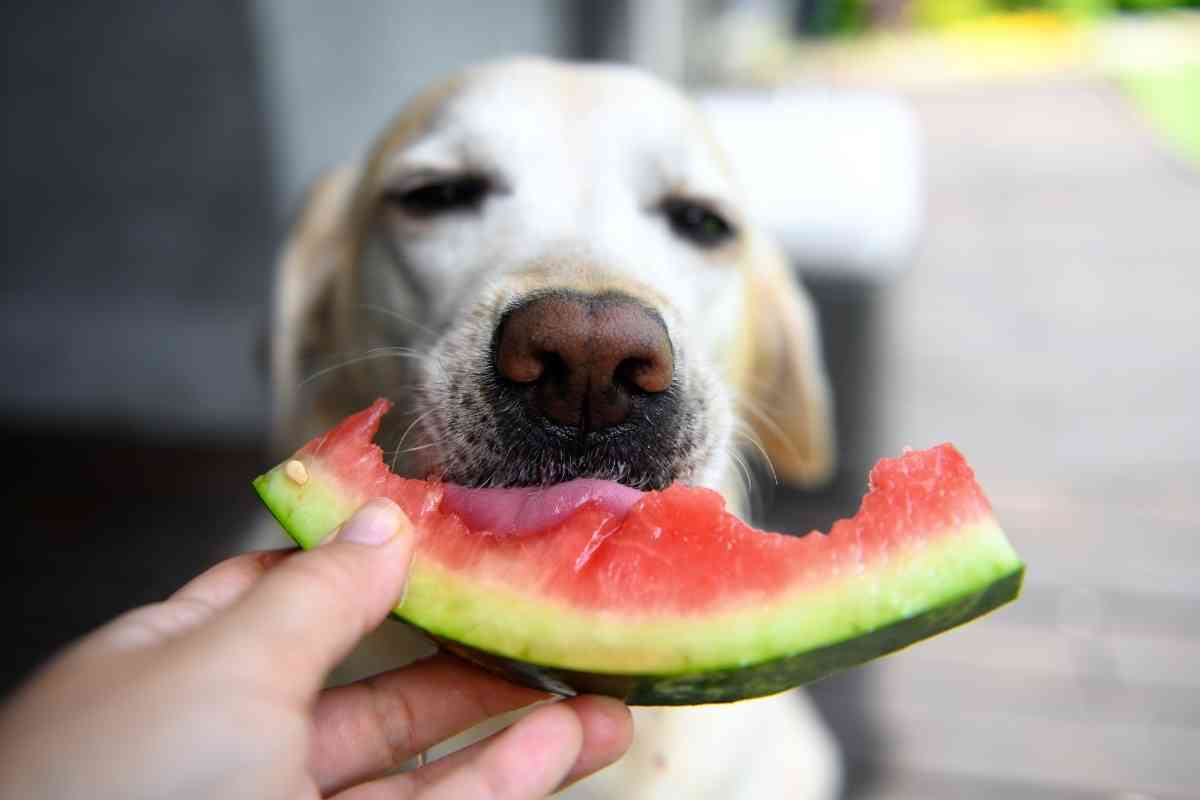How Much Should You Feed a Labrador Retriever Puppy
Having a lab in your family is cool and exciting. However, how much should a Labrador eat to ensure they stay healthy? While Labradors are prone to obesity, how much is enough to ensure the Labrador stays full and their health is not at risk? Knowing the feeding ratio is essential to giving your lab the correct quantity. The right food quantity ensures that your lab will not become obese or develop health issues in the future.

How much food should I feed my Labrador?
Between 6 and 12 weeks, your Lab should have four daily feedings; at three and six months, you can lower the daily meal frequency from four to three. At 6 and 12 months, you can begin twice-daily feeding. After one year, you can start dividing adult food into two daily portions.
However, remember that each puppy is distinct. The best line of action for feeding recommendations is to consult a veterinarian.
Given that choosing how much food to feed your Labrador is not a simple task, the information presented here comes from various published sources and experts. However, before looking at how much a Labrador Retriever should consume, first understand the different food you should give your dog.
What Should A Lab Eat?
Although the nutritional requirements of puppies, adults, and senior dogs vary, your Labrador will generally flourish on age-appropriate, high-quality dog food that can be purchased or cooked at home. First, you should understand the type of food you should feed your lab.
While Labradors adore human food, watching which foods are safe and which are not is wise. In fact, involving your vet to give you the go-ahead on which foods to give your furry companion and which ones are not is the best route to take.
Nonetheless, Labradors do well with lean meats, fish, beef, hog, chicken, duck, salmon, turkey, and tuna. Similarly, they enjoy apples, carrots, strawberries, peas, and pumpkin. You could also occasionally feed the eggs, pasta, simple white rice, cheese, plain yogurt, and oats.
Even though Labradors are an active breed, it is simple for them to gain weight, typically resulting from overfeeding since they appear to be perpetually hungry rapidly.
Figuring out what to feed a Labrador is not as straightforward as it may seem. Depending on the breed, the finest Labrador food will vary. However, you must select food rich in fat and protein and low in carbohydrates, whether you buy food from the store or cook it at home.
How Much Food Should A Lab Eat Daily?

Lab puppies develop at varying rates; some are more active than others, and their metabolisms differ considerably. However, the most significant influence is the concentration of nutrients and calories in the food brand you feed them.
High-quality foods are nutrient-dense and give a puppy all the nutrients they need modestly. On the other hand, cheaper products contain low-quality, nutrient-free fillers, which means that a puppy will need to consume substantially more to meet its nutritional needs.
While all food packages come with instructions on the quantities to feed your furry companion, they are not to be rigidly adhered to. You should be able to adjust the amounts based on what works best for your dog.
Bear in mind, however, that Gastrointestinal distress and diarrhea are common adverse effects when a puppy is overfed. You should divide their daily caloric intake into several smaller meals spread out throughout the day to avoid unforeseen situations.
Additionally, dividing the meal portions throughout the day makes each meal easier to digest, enhances the number of nutrients in each meal, and maintains your puppy's digestive health while giving a constant and consistent energy flow.
Here is a breakdown of how to divide the meals. However, as mentioned above, each Lab is different, and what works for one doesn't necessarily mean it will work for another. With that in mind, seek clearance from your vet first:
From Conception To Six Weeks
For the first six weeks, the puppy should nurse from the mother. You can introduce puppy food as early as six weeks when weaning can begin.
From Six Weeks To Twelve Weeks
As with human infants, puppies require multiple little meals every day. Between 6 and 12 weeks of age, provide four feedings a day of no more than two bowls of dog food. Consequently, three hours should elapse between feedings to allow for proper digestion.
Do not forget that overweight Labrador puppies are very hazardous. Your Labrador should have a waist by the time they are 12 weeks old; if they do not or appear to be overweight, you should cut their food intake drastically.
Three To Six Months
Between three and six months of age, you can decrease your puppy's daily feedings from four to three; however, three to four hours should pass between each meal.
From Six To Twelve Months
Between 6 and 12 months of age, you can begin twice-daily feeding. After one year, adult food can be introduced twice daily at 7-hour intervals.
The majority, but not all, Labradors will consume their food quickly. To discourage finicky eating, feed at regular intervals and do not leave their food out for longer than 10 to 20 minutes.
Depending on your pawed companion's feeding patterns, you can leave food out for grazing when they reach their senior years. Just be careful they don't consume it all at once, or you'll have to see a vet.
Feeding your puppy three hours before bedtime will prevent them from having to feel like relieving themselves in the middle of the night, thereby preventing you from falling asleep.
If your puppy regularly has soft stools or diarrhea, feeding them more small meals rather than fewer large ones may help. Attempt it unquestionably.
For your Lab to be as healthy as possible, it is of utmost importance to monitor the quality and quantity of their food intake from puppyhood onward. What we put into our bodies has a substantial effect on our health, vitality, lifespan, and quality of life, as we all know. Your dog is no different from you in this regard.
Don't worry if your puppy misses a meal or doesn't finish his food in one sitting. They may only require an adjustment in portion size.
If you are using treats for training, you may also need to reduce the amount of food offered at mealtimes and make the rewards as small as possible.
Activity Level For A Labrador
Labradors are among the most popular family dogs in the United States owing to their loyalty, pleasant temperament, and intelligence. Like most dogs, they gain health and happiness from regular exercise.
Labradors, like humans, need the right amount of exercise; too little or too much could put your dog at risk for developing health problems.
Too much exercise for your Labrador could cause your furry companion to develop mobility issues, lethargy, and anxiety. The fatigue could also make them reluctant to go on walks, resulting in reduced exercise detrimental to the Lab's health.
The decreased exercise could result in boredom, making the dog start chewing things around the house. They could also become hyperactive.
Puppy Labrador Retriever
Puppies require far less exercise than adult dogs, particularly in their early stages; therefore, it is essential to manage your puppy's activity to prevent exhaustion and damage to their developing joints.
A puppy spends the first three months of their life playing around the house. It is essential to prevent your puppy from becoming overly exhausted.
When your puppy is three months old and has received all of its vaccinations, you can start taking them for walks outside. Initially, these should be brief and simple, with the amount of activity increasing gradually as the pup grows.
Adult Labrador Retriever
Adult Labradors must engage in at least 80 minutes of high-quality exercise to maintain their health every day. The activities should address the specific needs; more active dogs will need more time, whereas calmer dogs will be healthy and content with less.
Consequently, Labradors enjoy swimming, and while most dog owners cannot do it daily, it is a fun way to break up the routine occasionally. Take them for a swim in a clean local river, lake, or dog-friendly beach, but make sure the water is not too deep, and they can enter and leave the water freely.
Senior Labrador Retriever
Your dog's activity needs will change as they age, so you must strike the proper balance. As your dog ages, they will have less energy and be more susceptible to mobility-limiting health issues. However, unless your veterinarian instructs you otherwise, you should not completely stop exercising.
Depending on your dog's health, you may want to limit high-intensity sports like running and promote low-impact activities like moderate strolling and swimming. Always consult with your veterinarian regarding your dog's exercise regimen, and strive to maintain a healthy weight for your pet.
Labradors will go to great lengths to keep pace with their parents as their loyal companions. Observe signs of overstretching, such as excessive panting, altered movement, and fatigue, and adjust your activities accordingly.
Source: https://retrieveradvice.com/how-much-should-a-lab-eat-feeding-by-age-and-activity-level/
0 Response to "How Much Should You Feed a Labrador Retriever Puppy"
Post a Comment